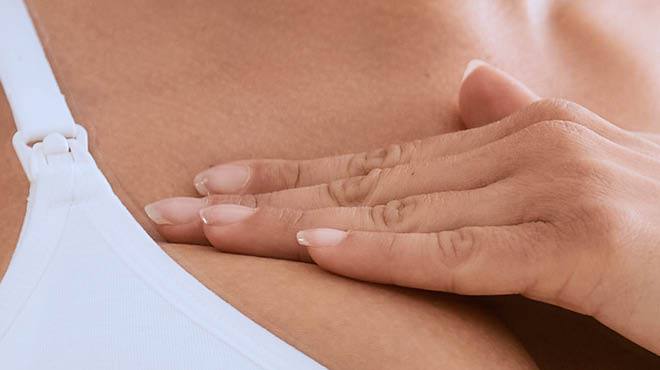-
Not all lumps are breast cancer: Benign breast disease

Changes to your breast can cause a lot of worry. This is understandable. But not all breast changes are a result of breast cancer.
Any breast symptoms, such as a breast lump, nipple discharge or breast pain, should be evaluated by a medical professional. If they are diagnosed as benign, it means they are not cancer. Noncancerous breast symptoms are known as benign breast disease.
Some cases of benign breast disease are discovered during a screening mammogram. Some are felt at home. For any lump or symptoms felt at home, it's recommended that you seek a health care professional for a thorough exam. If there are findings on a mammogram, your health care team will decide if additional imaging is required. This could include another mammogram to get more images of the spot and an ultrasound of the breast. Often, we can determine if the cause is benign or not through imaging alone. Sometimes a biopsy may be necessary.
The good news is that benign breast disease is not cancer. However, some benign breast disease needs treatment and can increase the risk of developing breast cancer in the future.
Here are a few common types of benign breast disease:
Fibroadenoma
Fibroadenomas are the most common benign tumor in the breast. Most often, they occur in people between ages 15 and 35. They often present as a firm, round, smooth and rubbery breast lump on a breast exam. Many fibroadenomas are managed by following repeat ultrasounds over time. They do not increase your risk for breast cancer in the future.
Breast cyst
Sometimes, cysts can develop in the breast. Cysts are fluid-filled masses. They can present as lumps noted in breast tissue or found on a mammogram. They don't always cause symptoms, but cysts that grow can lead to breast pain and tenderness. They are common between the ages of 35 and 60, and can fluctuate with menstrual cycles. Breast cysts do not increase your risk of breast cancer.
Mastitis
This is inflammation of the breast tissue caused by blocked milk ducts or bacteria in the breast. It commonly affects women who are breastfeeding, but it can occur in women who aren't breastfeeding. The inflammation leads to breast pain, swelling, warmth and redness.
Mastitis is treated using antibiotics and pain relievers. It does not increase your risk of developing breast cancer.
Papilloma
A papilloma is a growth in a milk duct and can present as nipple discharge. It also may present as a small lump behind or next to the nipple. A biopsy can help understand whether papillomas need to be treated, as they can sometimes contain atypical cells that can increase your risk for breast cancer. Treatment also depends on size, if there are multiple lumps or if they are causing symptoms. Surgery may be recommended to remove the papillomas as well.
Atypical hyperplasia
This type of benign breast disease is diagnosed by a breast biopsy of an abnormal finding on an exam or breast imaging. It is an accumulation of abnormal cells in the milk ducts or lobules of the breast. Atypical hyperplasia isn't cancer, but it increases the risk of breast cancer. For this reason, the area is sometimes removed with surgery. Often, health care teams recommend intensive breast cancer screenings and medications to reduce breast cancer risk.
All breast changes should be discussed with your health care team. In addition, an annual physical exam is a good way to review your risk for breast cancer and discuss an appropriate screening schedule for you.
Caroline Clune, M.D., provides breast cancer care in La Crosse, Wisconsin, and Rochester, Minnesota.
This article was originally published on the Mayo Clinic Health System Hometown Health blog.







